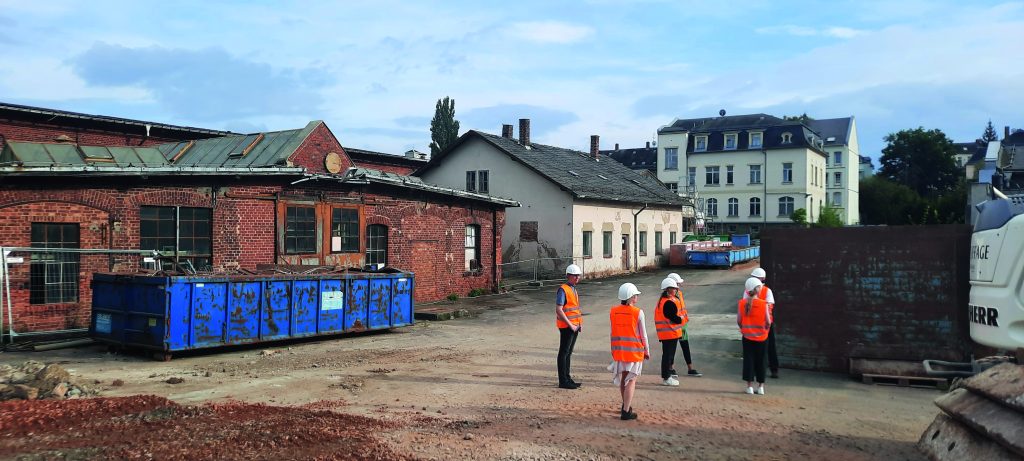 IMG_5147 / December 2023
IMG_5147 / December 2023
Our Campus-Tour to read
This year, we have been giving tours of the Garage Campus on the last Friday of every month and experiencing together with you how the area is developing bit by bit. For those of you who weren’t able to take part but are still curious to find out what exactly is going to be built in all those big halls, here’s another short tour for you to read.
START: Our tour begins in a colorfully decorated construction container just to the right of the workshop of Straßenbahnfreunde e.V. However, it is by no means as permanent as it appears at first glance in the middle of the large construction site on the garage campus, as it has been a place of eager planning, discussion and creative tinkering over the past six months. Our construction container has become the starting point for new ideas and a meeting point for curious visitors.
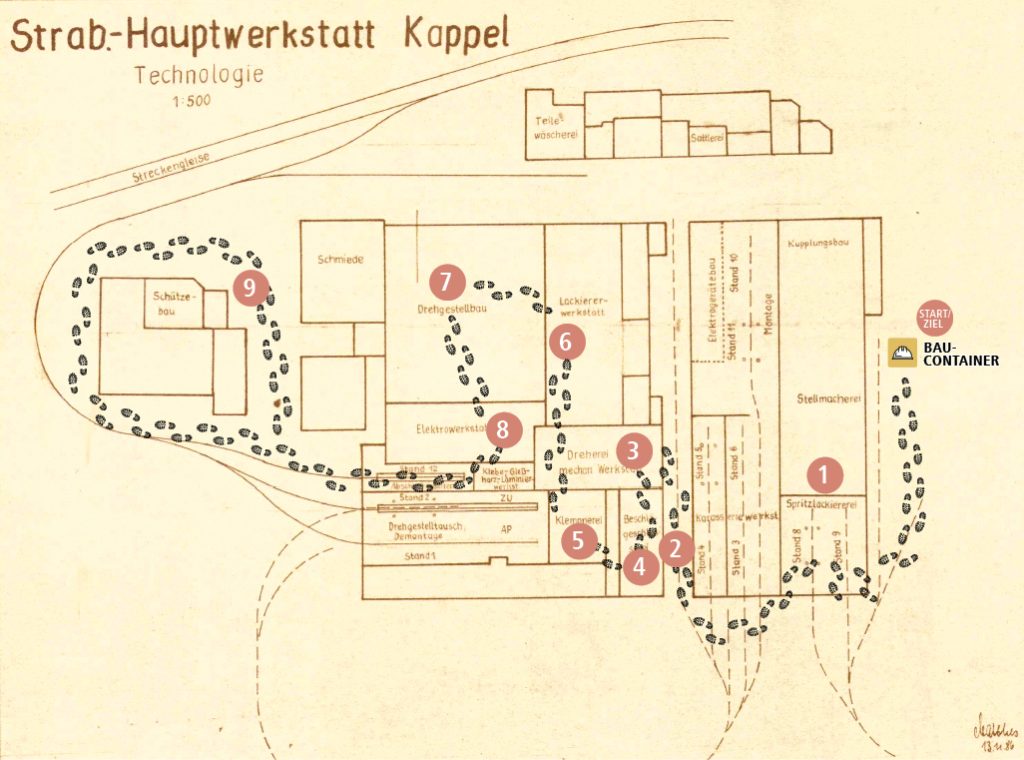
1) Equipped with a construction helmet, high-visibility vest and sturdy shoes, we first take a look at the streetcar enthusiasts’ workshop, where Stefan is usually at work and gives a little insight into his work as janitor of the streetcar museum and current projects of the Straßenbahnfreunde e.V. The Straßenbahnfreunde are a particularly important part of the Garage Campus and are currently the only active players who enliven the area on a daily basis. They run the streetcar museum and are passionate about maintaining the historic streetcars and buses. By January 2025 at the latest, the remaining areas should be completely renovated and open up to other ideas and stakeholders.
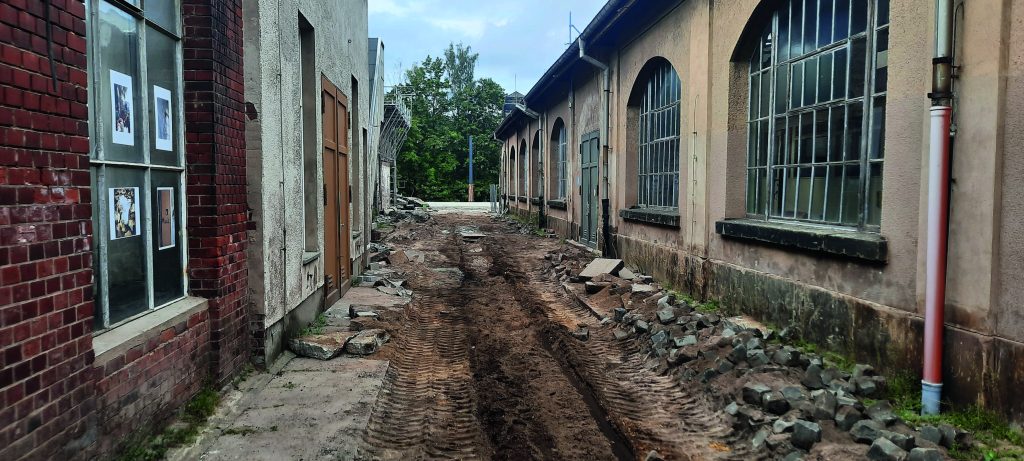
2) We walk a little further and look into a cozy alley between the streetcar museum and the part of the building that used to house the administration. Track 0 – the last narrow-gauge track in Chemnitz – is located here and gives the alley its special charm. The place exudes a tranquil atmosphere and strolling through the alley makes you feel like you’ve been transported back in time. This historical flair is to be supported by the installation of old lanterns and the resumption of the historical trips by streetcar enthusiasts, as well as providing space for new formats. Current ideas include, for example, track picnics, a long table for eating together or small markets with local products.
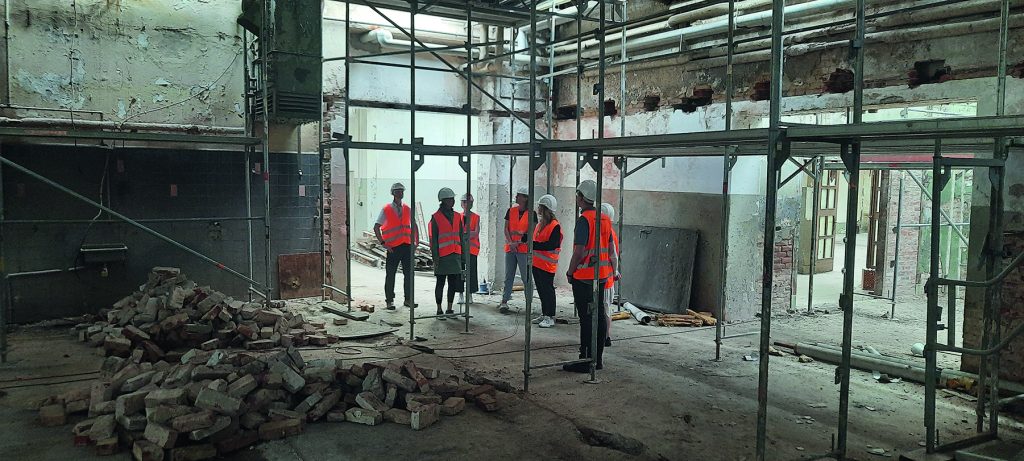
3) Behind the large metal door on the left-hand side of the alley is the former turning shop (mechanical workshop). An area for working together is to be created here. A ticket system will allow interested people to book a daily, weekly or monthly ticket for a workstation as required. This is particularly interesting for people who are looking for a workplace outside their home where they can exchange ideas and network with others. Pupils, trainees and students can also book a ticket at a reduced rate and use the space to work.
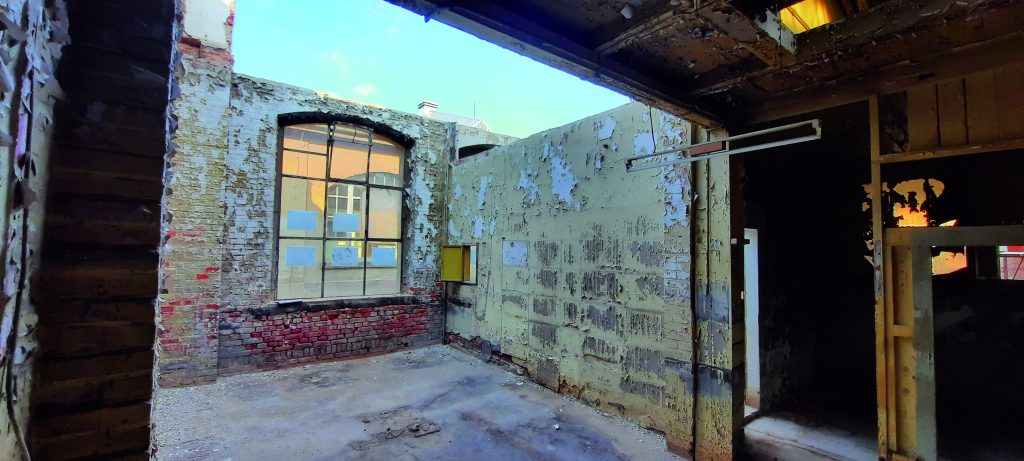
4) Directly to the left, in the former metalworking shop, two office spaces are to be created, which will be rented on a permanent basis and organized as an office community. This means that the tenants of the offices will interact with each other and share the space. It is also important that the tenants are interested in interacting with the rest of what is happening on the campus and are actively involved.
5) Opposite the shared office space is the small event hall, where the plumbing used to be. Small events of all kinds can take place there. In 2025, we would like to focus here on the topic of urban development and bring together Chemnitz citizens with business, politics, research, administration and the independent cultural scene.
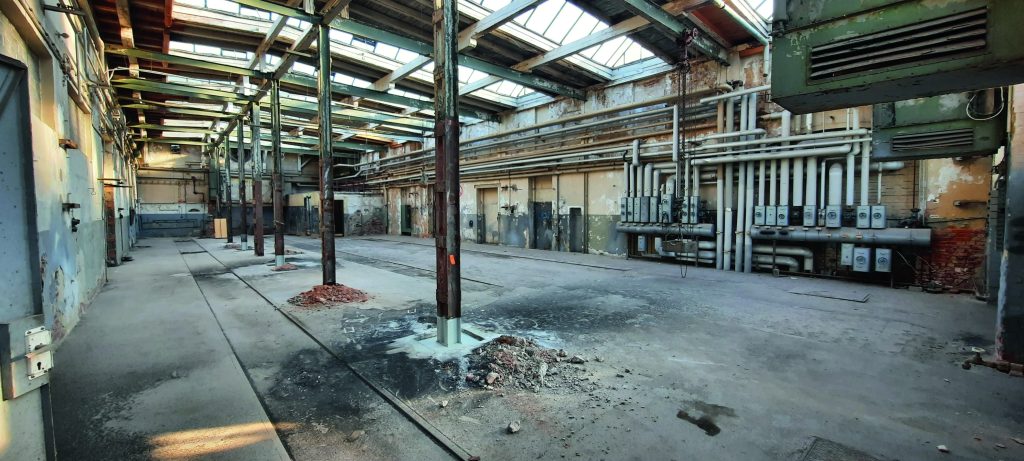
6) The former paint shop adjoins the right-hand side of the former turning shop. From 2025, a display warehouse is to be created here – a mix of storage and exhibition space, so to speak. Items and curiosities that are no longer in use will be stored here for a short time and then moved on as soon as they are needed again. In this way, the warehouse is always on the move and at the same time becomes an ever-expanding exhibition of crazy objects. Right next to the Schaulager, there will be rooms for small workshops and studios as well as a welcome area where guests and users of the campus can be received and find their way around.
7) Right next to it is the event hall, which is around 900 m² in size and used to house the bogie construction department. By installing one or two smaller room-in-room solutions, the hall can be used by different groups at the same time during everyday events. The furniture in the hall is to be movable and lightweight so that the space can be redesigned and adapted to different needs and event formats.
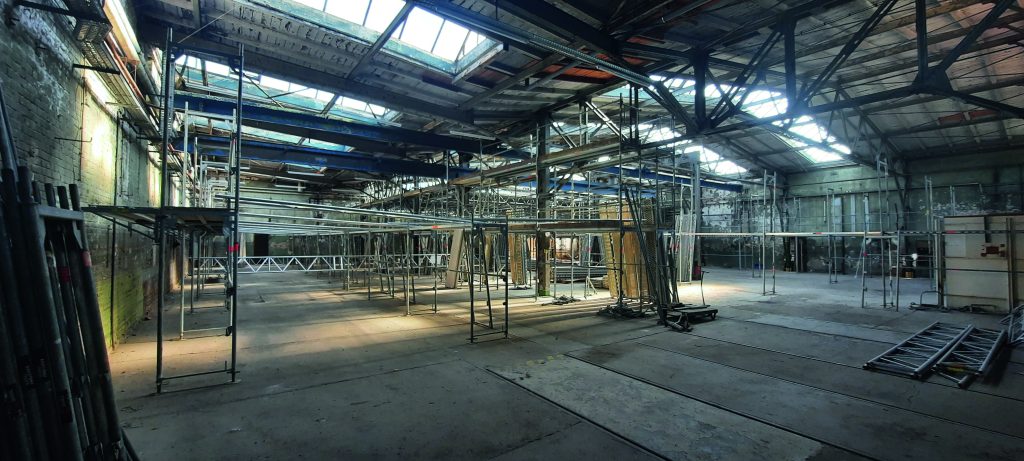
8) The former electrical workshop right next to the hall offers additional space that can be used flexibly for larger events, for example as a backstage or break area. Otherwise, the space will be developed into a creative workshop where various formats can take place around joint work.
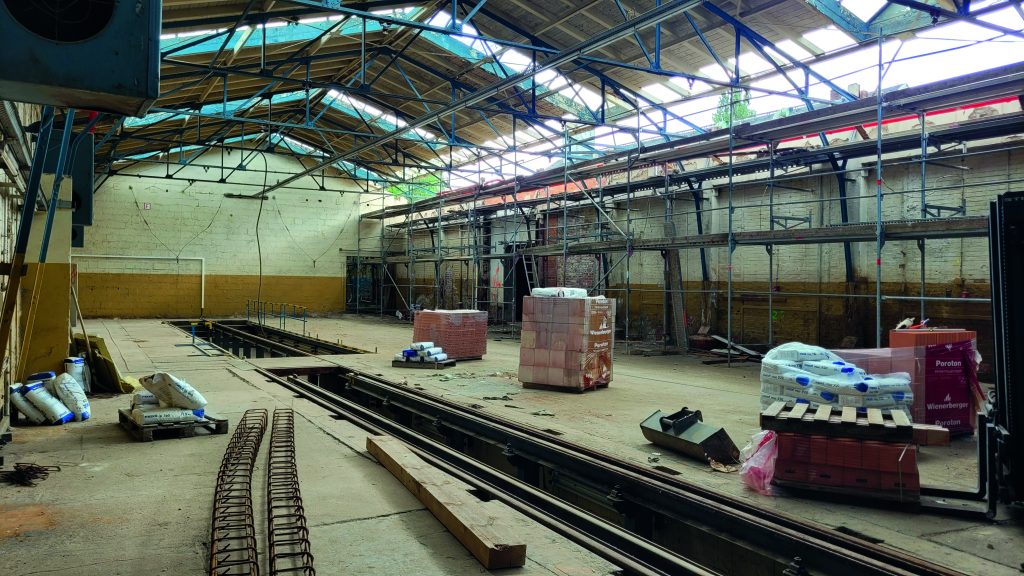
9) On the way out into the outdoor area, we walk through a long hall where gluing, casting, resin and laminating work used to be carried out. In another hall right next to it, bogie replacement and dismantling took place. Both areas will be made available to streetcar enthusiasts again in the future so that they can take the historic streetcars directly out onto the tracks. Once outside, we take a look across the tracks into the countryside. In the evening sun, this is a wonderful place to relax and sit together, allowing people on their tour of the Kappel cycle path along the Kappelbach stream to take a relaxed little trip to the Garage Campus. Of course, a good gastronomic offer should not be missing here! We would therefore like to set up a social café with a beer garden atmosphere in the former Schützebau building. The old smithy is to be converted into a restaurant and the adjacent coach house will provide space for a catering kitchen. Various chefs or event organizers, for example, can then rent space here and try out their skills.
We now stroll back across the site to the construction container, where our little journey into the future of a historic site began earlier.
